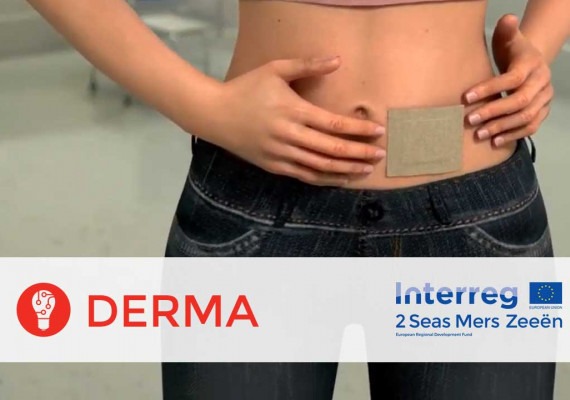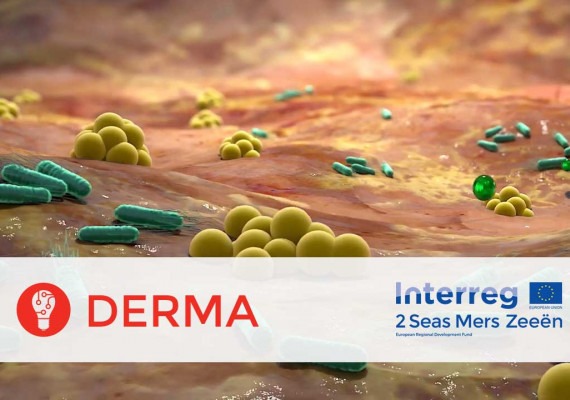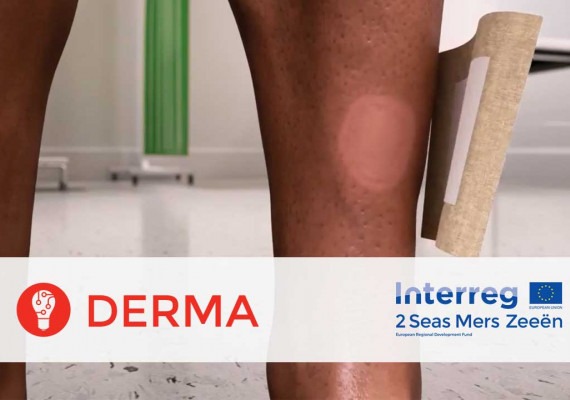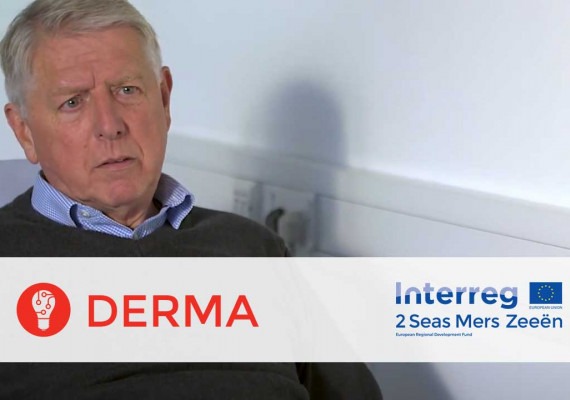DERMA
Date de début
01/09/2016Date de fin
30/11/2020Project budget
2 724 815 €ERDF amount
1 634 889 €ERDF rate
60%À propos
Common challenge
DERMA tackled the common challenge of improving the quality of life of the growing aging population of the 2 Seas area. By 2025, it is expected that over 20% of Europeans will be 65 or older, and the number of people over the age of 80 are increasing significantly. The project addressed the problem of inflammation, infection and skin ulceration associated with advanced age or disease. Dermal ulcers are a source of physical discomfort, can lead to further medical complications, and can liberate offensive odours that are distressing to the patient and may lead to social isolation and depression.
As such, DERMA focused on developing new healthcare technologies to improve the quality of life of the ageing population, a key EU priority. The aim is to advance capabilities in the management of dermal ulcers and the related skin condition, peristomal inflammation, with focus on established technologies using marine materials. Ulceration of the extremities of elder people is a major societal challenge. Moreover, the presence of diabetes, cardiovascular disease, fungating tumours and long-term immobilisation, exposes all age groups to dermal ulceration. DERMA applied its technologies for innovative solutions for the management and treatment of such dermal skin conditions.
Overall objective
Main outputs
Cross border approach
Main Achievements
The DERMA project has developed novel dressing materials intended for the improved management of chronic dermal ulcers. In such wounds, infection and inflammation can cause skin tissue to break down, often producing offensive odours. These wounds can be painful, and the malodour embarrassing for the patient, potentially leading to social isolation and depression.
To meet these twin challenges, the project has developed two types of materials. The first is to manage unpleasant odours from a wound, and the second to visually indicate the emergence of a developing infection. The materials to combat wound malodour have used Activated Carbon (AC) granules as the active ingredient. One form is a thin film made by combining AC with agarose from seaweed that has been treated to be flexible and elastic and able to fit the contours of the skin. The material has been augmented to have a fluid handling capability to make it potentially suitable for use on sloughy wounds which can otherwise cause damaging tissue maceration.
AC for odour control has also been incorporated into very fine, electrospun fibres with a large surface area for odour removal. These proprietary fibres are highly water absorbent, of benefit for wound moisture control. The fibres also have a remarkable ability to release antimicrobial agents over extended periods, meaning that, in the form of a wound dressing, they could potentially be more efficient than current materials.
To indicate the presence of an infection, a bacterial growth indicator dye, resazurin, has been incorporated into a biodegradable, transparent film. The dye changes colour from blue to bright pink when exposed to growing bacteria and is intended to provide an early warning that an infection is developing, and that intervention is required. The release of the dye from the film has been controlled such that the dye should remain visible in the dressing when applied to a patient.
Resazurin was also successfully entrapped within a molecule called cyclodextrin, adding further control to its release and allowing it to be electrospun to produce a fibrous, swellable material intended for the detection of infections.
Testimonial
By producing a material that can detect bacterial growth and indicate infection using relatively simple technology in a new way, the DERMA project has demonstrated the potential for new medical technologies to address the major problem of chronic wounds. While it is hoped that the DERMA technology will find a route to market, it is also expected that other actors in the field will now be encouraged to pursue similar technologies that will result in patient benefit for the 2 Seas population.





